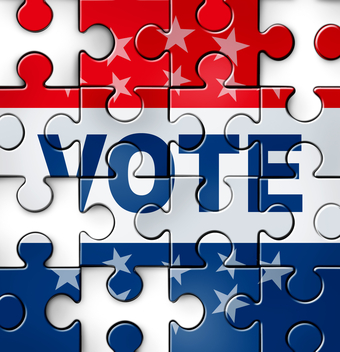Tuesday, March 25, 2014
By CallFire, Follow me on Google+

Robo polling is one of the most useful election technology tools around – and, according to some, more reliable than other forms of polling.
There’s no doubt robo polls are popular with campaign managers. Cheap, fast and consistent, proponents of robo polls say they return more accurate results. Tens of thousands of calls can be made in a single day, giving pollsters a far bigger sample to work with than is possible through traditional live calls.
The Wall Street Journal published an article during the 2008 presidential campaign highlighting some of the advantages of using IVR election tech for the purposes of polling. The article stated that ‘politicians’ names are pronounced correctly and identically each time, and responses entered correctly are recorded correctly.’
The article went on to suggest that robo polls are more likely to induce honest responses, particularly on sensitive topics. Data collected on President Obama’s first election campaign indicated that robo polls returned a significantly higher estimate of disapproval ratings, and a significantly lower estimate for ‘no opinion’.
The most obvious advantage from a campaign management perspective is the drastic reduction in cost. As government budgets shrink, it’s hardly surprising that automated election technology tools like robo polling are so attractive. PMI Polling published a number of case studies showing just how low-cost an automated campaign can be.
For the most compelling real-world evidence of the efficiency of automated polling, we need only look to our friends in the north. Canada rolled out the bots during their 2008 elections. Canadians found IVR polling to be the most accurate method during the last round of provincial elections in Alberta and Ontario. Robo polling also outperformed online polls in British Columbia, and live-caller polls in Quebec.
This track record is indisputable – and yet US campaign strategist have been slower on the uptake than their Canadian counterparts. There’s a sense that, if automated election technology is to really take off stateside, ‘robo calls’ must shake off the stigma associated with their use for marketing purpose. As that stigma fades, the clear benefits of IVR polling will come into focus.
It’s likely to be a slow transition. Pollsters will favor a combination of automated and manual methods, treading carefully while statisticians collate data during each election cycle. North American polling firms are beginning to blend samples gathered by live, online and IVR campaigns. This strategy not only optimizes coverage, it mitigates the limitations of each method.
Spreading eggs across baskets is common sense. But even the most hesitant campaign manager, averse to more modern election technology tools, does not dispute the advantages of robo polling: it’s affordable, can reach more people than live calls, and eliminates human variables like accents, inflections and even attitudes. That can only be a good thing for every pollster’s ultimate objective: accurate predictions of election outcomes.
